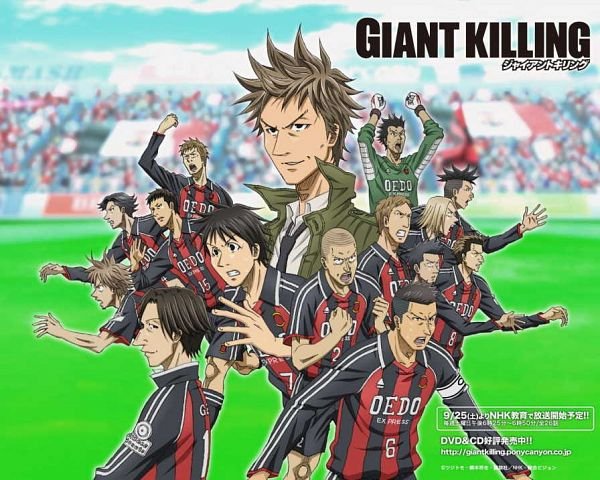tOP 10: ANIMATED CARTOON FOOTBALL
Captain Tsubasa, the reference
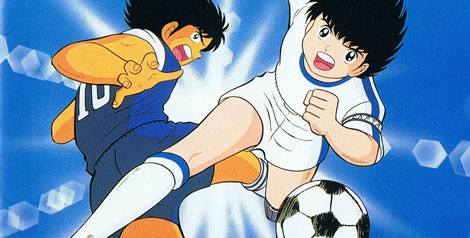
In 1988, arrives on the Five a series that will tape in front of his screen a whole generation: Olive and Tom. How many kids will try with the pals the catapult of the Derick brothers, the combined shot of Ben Becker and Olivier Atton, Thomas Price's one-hand stops, falcon shot, dead leaf or support on a Pole to get a ball to the Ed Warner? The first version of the cartoon lasts only two seasons (primary championship and college championship), but surely remains the most important football manga of television.
On the occasion of the 1998 and 2002 World Cups, new versions are produced: the plot is set up around the junior world championship, in which the Japanese team participates and who will see the beginnings of the pro career of Tsubasa. In this latest version, Olivier joins the Barca, where fictional players rub shoulders with real pros players, including the great Richard Dutruel.
The Children of the World, the pedagogue
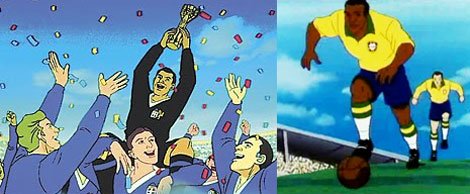
In 1994, on the occasion of the World Cup, Canal + broadcasts Les Enfants du Mondial, a Japanese series recounting the major matches of the FIFA World Cup. Through the memories of Brian Thompson, a retired journalist, we were able to discover the great matches of all the final stages (from the victory of Uruguay in 1930 to the last German coronation in 1990) and especially the detailed portraits of the most Great players in history (Pele, Beckenbauer, Müller, Eusebio, Maradona, etc.).
The School of Champions,
In 1992, the École des champions landed at the Club Dorothée. The adventures of Benjamin Lefranc resemble those of Olivier Atton: a young Frenchman arrives in the city of Genoa (in the Japanese version, he is a young Japanese). He is picked high by the San Podesta junior team and joins the small team of Columbus. With the advice of a former professional player, the young Benjamin will take his team to the heights and become one of the country's greatest hopefuls.
The series knows its little success but will be tainted with many controversies. Presented as a Franco-Japanese production, the series turns out to be a Japanese production in which the French tried to intervene to circumvent the quotas of French productions. An employee of AB Productions was sent to Japan, but the drawings and scenarios had already been made. Its presence still disrupted production and France had to settle for 49 episodes instead of the 52 planned. To spend the manga in French production, the studios of AB had fun to go up the episodes and even created three last episodes from images of the first ones.
Goal for Rudy, the anti-hero
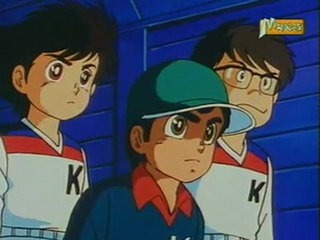
When Goal for Rudy (Gambare Kickers in Japanese) arrives on the Cinq in 1986, the chain relies on the success of Olive and Tom and even allows himself to create a link between the two series. Under the pretext that he wears a green jersey, the French doubles will stipulate that the hero has played for the San Francis. This link does not exist in the Japanese version.
The design is the same but the scenario is very different. Rudy does not win all his matches, does not make all his technical gestures (he wallows often enough on his attempts) and his teammates are not warlike (special mention to the big plate of soup that serves as a defender).
Hurricanes, the fair-play series
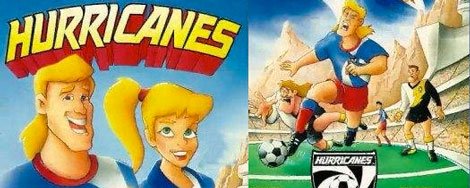
Broadcast by M6, this British series created in 1993 takes us behind the scenes of a football club following the adventures of Amanda, a young girl succeeding her father at the head of the Hurricanes. The feminine touch brought by Amanda is reflected in her team's irreproachable attitude on the field.
Despite the incessant provocations of the Gordons, a team full of Materazzi, good play and fair play are the only means used by the Hurricanes to win the matches. Interesting detail: each episode includes a short sequence with different stars of the ball.
Eleven for a cup, the pioneer

On the occasion of the 1982 World Cup, a series is created around the mascot of the competition: Zest (or Naranjito for the original version). Accompanied by his friends Citronnet and Clémentine, and their buddy robot, Yamatélé, Zest tries to explain the rules of football when the villain Miellock seizes all the images of archive of the World Cup. Zest is obliged to go to all the organizing countries to recover the archives and give them to his little robot who eats the reels and diffuses the images on his ventral screen. This intrigue serves as a pretext for Onze for a cup to teach the younger generations the history of the World Cup.
- Whistle, the modern Tsubasa
Manga available in France only in original subtitled version, Whistle tells the story of Sho Kazamatsuri. Later, due to his small size, he joins a more modest team with whom he learns all the technical aspects of the game step by step.
Like that, we could think of Valbuena, but Sho has a Bakayoko in each foot: he is able to quickly assimilate gestures of very high class while he will miss the simplest control possible. Very realistic cartoon, each episode ends on a little lesson of soccer.
- Galactik Football, the fantastic series
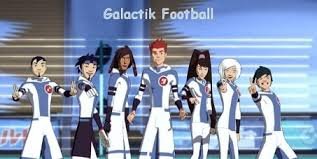
Released in 2006 on France 2, this series combines football with fantasy and enjoys a high quality graphics. In a futuristic world, teams from different planets compete in the Galactik Football Cup, the only competition in which they can use their super powers.
The series follows the course of the Snow Kids, a team composed of girls and boys who must learn to master their faculties in order to hope to win the final cup. Each character is worked on (the narcoleptic guardian, the scientific advocate, the striker convinced of his destiny) and the presence of girls on the team brings many possibilities in the relations between players.
- Foot 2 street, the urban declination

Adapted from The Compagnie des Célestins by Stefano Benni, the animated cartoon foot 2 rue abandons the political side of the novel to deal only with the libertarian and playful aspect of street soccer. With strong urban sound (Kool Shen and Akhenaton have participated in the soundtrack), the series tells the story of the Tag, a young football fan who arrives in a boarding school in Marseille and sets up a football team with his friends to participate At the first street soccer World Cup.
All the codes that made the success of Olive and Tom are respected: the ultra gifted player, the love story in the lead, the twins who try incredible combinations and the not very good player who serves as a -train.
- Giant Killing, the last born
Manga released in 2010 in Japan, Giant Killing is a true dive into the world of football. Between the two-headed presidency that does not agree on the policy to be carried out, the Ultras who think they can influence the fate of the coach, the egos of the players to manage, the journalists who seek the controversy, the personalities of the coaches Which reflect on the game of their team, the screenwriters have not forgotten anything.
The thread remains the return of an ancient glory in the skin of the coach in a club adrift. His methods upset the hierarchy but proved themselves in England, where he succeeded in beautiful courses in Cup with a team of amateurs. The giant killing is a sort of eye of the tiger, version football. Each player must acquire it in order to be able to overcome the biggest. A must see.
